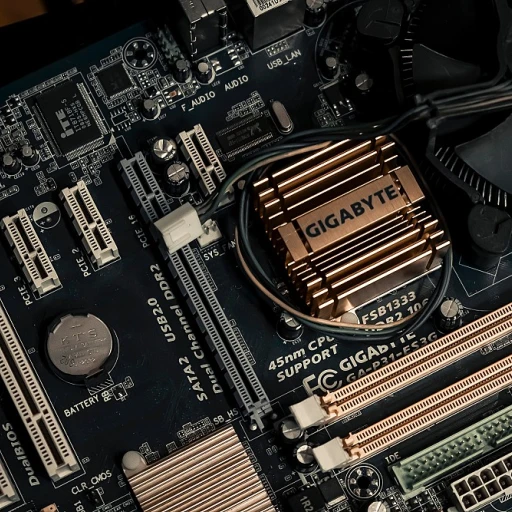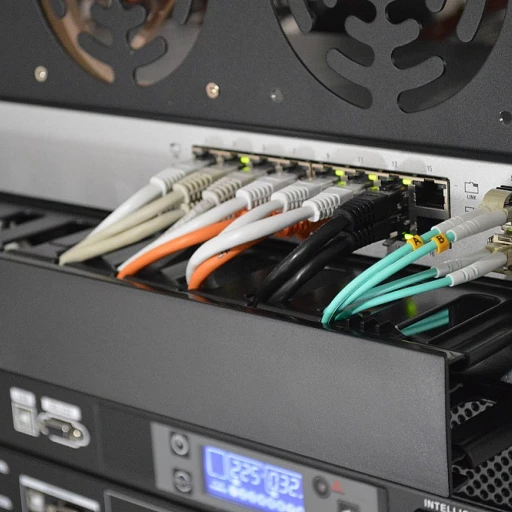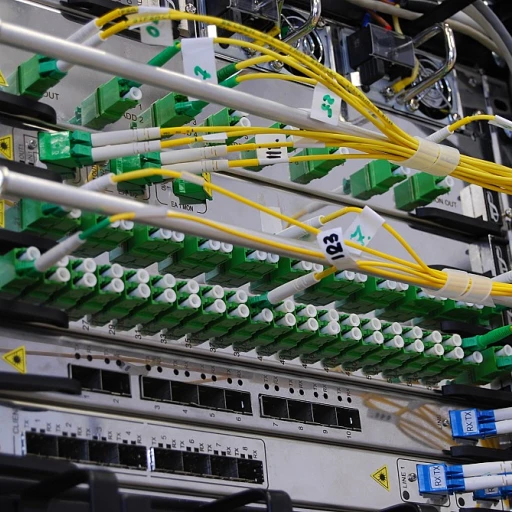Flexibility and scalability in content management
Breaking free from traditional cms constraints
Traditional CMS platforms have been the backbone of web development for a while, but they come with their fair share of limitations. These systems often tie the content management and presentation layers together, making it difficult for developers to create unique digital experiences across various channels. Enter headless CMS, a game-changer that breaks these chains, offering flexibility and scalability in content management.
A headless CMS decouples the content management system from the presentation layer, allowing developers to deliver content to any front-end platform, be it a website, mobile app, or IoT device. This separation provides a significant advantage over traditional CMS platforms, which often require content to be tailored to specific presentation formats. With a headless CMS, content can be created once and delivered across multiple channels without the need for constant reformatting.
Scalability: the secret sauce for growing businesses
As businesses grow, so does their need for a scalable content management solution. Traditional CMS platforms can struggle to keep up with increasing demands, leading to performance issues and a poor user experience. Headless CMS architecture, on the other hand, is built to handle growth with ease.
By separating the content and presentation layers, headless CMS allows businesses to scale their digital experiences without compromising performance. Developers can update the front-end independently of the back-end, enabling faster deployment of new features and improvements. This flexibility is particularly beneficial for businesses operating in fast-paced industries, where staying ahead of the competition is crucial.
Moreover, headless CMSes offer the ability to integrate with other platforms and services, such as headless commerce solutions like BigCommerce or Shopify. This integration capability ensures that businesses can continue to expand their digital presence without being held back by the limitations of a traditional CMS.
For more insights on the differences between headless and traditional CMS, check out this
guide to understanding the future of content management.
Flexibility: the key to a personalized digital experience
One of the most significant benefits of headless CMS is the flexibility it offers in content delivery. By decoupling the content management system from the presentation layer, businesses can create personalized digital experiences that cater to their audience's unique needs and preferences.
Developers have the freedom to choose the best tools and technologies for each project, allowing them to create innovative and engaging user experiences. This flexibility extends to the content itself, as headless CMS platforms enable businesses to deliver content in various formats, such as text, images, videos, and even interactive elements.
In a world where user experience is paramount, the ability to deliver tailored content across multiple channels is a game-changer. With a headless CMS, businesses can ensure that their digital experiences are not only consistent but also engaging and relevant to their audience.
Stay tuned for the next part of this series, where we'll explore how headless CMS can enhance user experience and showcase successful implementations of this innovative content management system.
Enhancing user experience with headless cms
Creating seamless digital experiences
When it comes to crafting a killer digital experience, a headless CMS is like your secret weapon. Why? Because it lets developers and content creators work their magic without stepping on each other's toes. Imagine being able to whip up engaging content without worrying about how it'll look on the front end. That's the beauty of decoupling the presentation layer from the content management system.
Personalized content across multiple channels
With a headless CMS, you're not just stuck with one way to present your content. Whether it's a website, a mobile app, or even an IoT device like an Amazon Echo, you can deliver personalized experiences across all these platforms. This flexibility means you can tailor the user experience to fit the channel, making your content more engaging and relevant.
Faster content delivery
Speed is the name of the game, and a headless CMS can give you that edge. By separating the back end from the front end, developers can use modern technologies like CSS and PHP to optimize the content delivery process. This means faster load times and a smoother user experience, which is crucial for keeping visitors on your site.
Integration with modern technologies
One of the coolest things about a headless CMS is how it plays nice with other modern technologies. Whether you're using a digital experience platform like Adobe or experimenting with headless commerce solutions from BigCommerce, a headless CMS allows you to integrate seamlessly. This opens up a world of possibilities for creating innovative digital experiences.
Curious about how low-code use cases are reshaping software development? Check out this link for more insights.
Case studies: successful implementations of headless cms
Nike's seamless digital transformation
When Nike decided to step up their digital game, they turned to a headless CMS. Why? Because they wanted to deliver a seamless experience across multiple channels. With a traditional CMS, they were facing challenges in content delivery to various digital platforms. By adopting a headless architecture, Nike's developers could focus on the front-end presentation layer without being tied down by the back-end content management system. This decoupled CMS allowed them to create a flexible and scalable digital experience platform, which significantly enhanced their user experience.
Bigcommerce and the headless commerce revolution
BigCommerce, a major player in the e-commerce space, leveraged the power of headless commerce to offer a more personalized shopping experience. By using a headless CMS, BigCommerce could separate the content creation from the presentation layer, allowing them to deliver content across different channels effortlessly. This approach not only improved their content delivery but also provided them with the flexibility to integrate with various platforms, resulting in a more engaging and dynamic user experience.
Google's innovative approach to content management
Google, a tech giant known for its innovative solutions, embraced headless CMS to manage their vast amount of content. By decoupling the content management from the presentation layer, Google could deliver content quickly and efficiently across its digital platforms. This headless CMS architecture allowed their developers to focus on creating unique user experiences without the constraints of a traditional CMS. The result? A more streamlined and effective content management system that supports Google's ever-evolving digital experience strategy.
Adobe's leap into headless content management
Adobe, a leader in digital media solutions, recognized the benefits of headless CMS for their content management needs. By adopting a headless approach, Adobe could enhance their content delivery across various channels, providing a more cohesive digital experience for their users. This shift not only improved their content management system but also allowed them to stay ahead in the competitive digital landscape.
These case studies highlight the transformative impact of headless CMS on businesses looking to enhance their digital experiences. By adopting a headless architecture, companies like Nike, BigCommerce, Google, and Adobe have successfully navigated the challenges of content management and delivery, setting a new standard for digital experience platforms.
Challenges and considerations in adopting headless cms
Weighing the pros and cons
So, you've heard all about the benefits of headless CMS and you're thinking, "Sign me up!" But hold your horses, because like any shiny new tech, headless CMS comes with its own set of challenges. Let's dive into some of the hurdles you might face when adopting this system.
Technical complexities
First off, headless CMS isn't exactly plug-and-play. Unlike traditional CMS platforms where everything is neatly packaged, headless CMS requires developers to work their magic to connect the backend content management system with the front-end presentation layer. This decoupled architecture can be a bit of a headache if your team isn't familiar with the tech. It's like trying to assemble a piece of IKEA furniture without the instructions. If you're not prepared, you might find yourself knee-deep in code, trying to figure out how to get your content to display just right.
Integration issues
Another potential snag is integration. Headless CMS allows for great flexibility, but that also means you need to ensure it plays nice with your existing digital experience platform and other tools. Whether it's your CRM, analytics software, or even your IoT devices like Amazon Echo, you'll need to make sure everything works together seamlessly. And let's not forget about the learning curve for your team. Switching from a traditional CMS to a headless one can feel like learning a new language. It takes time and effort to get everyone up to speed.
Cost considerations
Let's talk money. Implementing a headless CMS can be more expensive upfront compared to a traditional CMS. You'll likely need to invest in developers who can handle the technical side of things, and there may be additional costs for integrating with other systems. Plus, ongoing maintenance and updates can add up. But remember, it's an investment in flexibility and future-proofing your digital experience.
Content delivery challenges
Lastly, there's the challenge of content delivery. With a headless CMS, you're not just managing content for a single website. You're creating a central hub for content that needs to be delivered across multiple channels and devices. This can complicate things, especially if you're used to the one-size-fits-all approach of traditional CMS platforms. You need to think about how your content will look and function on everything from a smartphone to a smart fridge.
While headless CMS offers a lot of benefits, it's important to go in with your eyes wide open. Weigh the pros and cons, and make sure it's the right fit for your needs. If you're ready to embrace the future of content management, headless CMS could be your ticket to a more flexible and scalable digital experience.
What's next for headless cms and digital experience platforms?
The digital space is always on the move, and headless CMS is no exception. As businesses and developers look for more efficient ways to manage and deliver content, the future of headless CMS seems promising and full of potential.
Integration with iot and emerging technologies
One exciting trend on the horizon is the integration of headless CMS with IoT devices. Imagine content seamlessly flowing from your CMS to devices like Amazon Echo or smart TVs. This kind of integration will open up new channels for content delivery, making it possible for users to interact with content in ways we haven't fully explored yet.
Rise of composable content platforms
Composable content platforms are gaining traction, allowing businesses to mix and match various content services to create a tailored digital experience. This approach offers more flexibility and scalability, enabling companies to adapt quickly to changing market demands and user preferences. Headless CMS will play a crucial role in this shift, providing the backbone for these modular platforms.
Enhanced personalization and ai-driven experiences
Personalization is becoming more important in delivering engaging user experiences. With advancements in AI and machine learning, headless CMS platforms will be able to offer more personalized content to users based on their behavior and preferences. This means that digital experiences can be more tailored, relevant, and impactful.
Headless commerce and the future of retail
Headless commerce is another area where headless CMS is making waves. Retailers like Nike and Amazon are already leveraging headless architectures to create seamless shopping experiences across multiple channels. As e-commerce continues to grow, headless CMS will become a vital tool for businesses looking to stay competitive in the digital marketplace.
Collaboration with digital experience platforms (dxp)
Digital experience platforms (DXP) are evolving to offer more comprehensive solutions for businesses. By combining the strengths of headless CMS with DXP, companies can create more cohesive and engaging digital experiences. This collaboration will allow for better content management, delivery, and user engagement across all digital touchpoints.
In summary, the future of headless CMS is bright, with new technologies and trends shaping how we manage and deliver content. As businesses continue to embrace these innovations, headless CMS will remain a key player in the digital experience landscape.
















